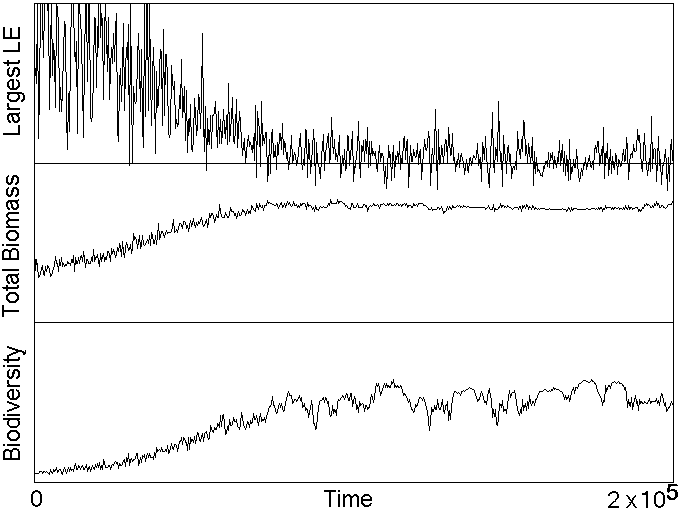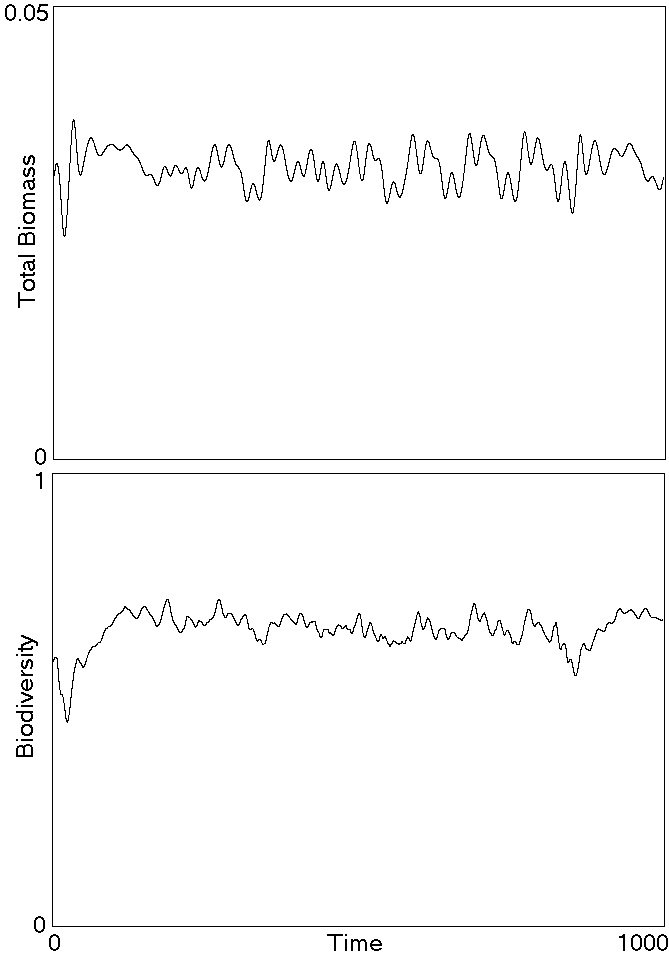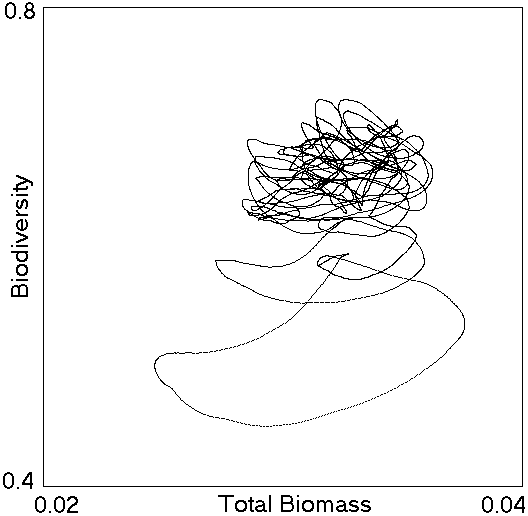Coexistence and Chaos in Complex Ecologies
J. C. Sprott, J. A. Vano, J. C.
Wildenberg, M. B. Anderson, and J. K. Noel
Departments of Physics and Mathematics, University
of Wisconsin- Madison, Madison, WI 53706, USA
(Received 28 September 2004; received in revised form 14 December
2004; accepted 15 December 2004)
ABSTRACT
Many complex dynamical systems in ecology, economics, neurology, and
elsewhere, in which agents compete for limited resources, exhibit
apparently chaotic fluctuations. This Letter proposes a purely
deterministic mechanism for evolving robustly but weakly chaotic
systems that exhibit adaptation, self-organization, sporadic
volatility, and punctuated equilibria.
Ref: J. C. Sprott, J. A. Vano, J. C.
Wildenberg, M. B. Anderson, and J. K. Noel, Phys. Lett. A 335,
207-212 (2005)
The complete paper is available in PDF
format.
Return to Sprott's Books and Publications.
Fig. 1. Evolution of the largest Lyapunov exponent (0.02 full
scale), total biomass (0.05 full scale), and biodiversity (1 full
scale) showing how a typical system with 100 species slowly evolves
toward a weakly chaotic state with high diversity and then remains
there with fluctuations in the biodiversity suggestive of sporadic
volatility and punctuated equilibria.

Fig. 2. Typical chaotic fluctuations in the total biomass and
biodiversity for a system with 100 species after adaptation has been
turned off.

Fig. 3. A portion of the strange attractor for the same typical
system as in Fig. 2 with 100 species after adaptation has been turned
off.
